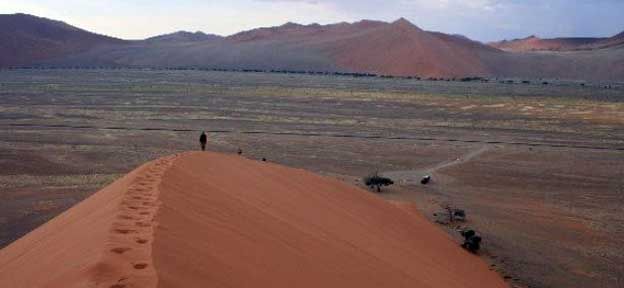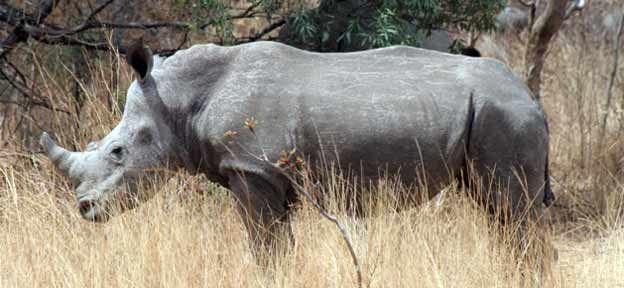Nairobi to Cairo Nile Expedition 6 Weeks - Itinerary
What’s it like?
As we will be camping and travelling for an extended period of time, you must be prepared for an adventurous challenge. It can be hot and dusty, and will sometimes be out of contact with the rest of the world. This means no telephones, shops or any other mod cons. We need you to participate and work with all members of the expedition. For the Nile Expedition we use sturdy purpose-built vehicles for rugged off-road conditions. Due to the nature of the trip, the day-to-day itinerary is flexible.
Week 1: Kenya
Northern Kenya – the NFD Northern Frontier District
From Nairobi, we travel northeast around the foothills of Mount Kenya – to the Northern Frontier District of Kenya, a restricted area; semi-arid with a spectacular diversity of people, wild game on the roadside and a warm dry climate. In this wild frontier district which is 600k kilometres north to south, between Kenya and Ethiopia, this savage and beautiful land, kept the peoples of the Kenyan and Ethiopian Highlands separated for thousands of years. Before roads were pushed through this area, the only way to travel here was by camel, and with the tribes of the region; the Turkana, Rendille, the Gabbra, the Samburu, the Borana and others. All these peoples are semi nomadic pastoralists who have survived in a harsh land herding sheep, cattle, goats and camels. Their style of living, colour, form and traditions are strikingly beautiful.
Mount Marsabit
In the middle of this dry barren landscape is an old shield volcano – Mount Marsabit it sits 1,000 metres above the surrounding desert. The hills have their own insulated ecosystem. There is evidence of recent lava flow throughout the hills, with crater lakes and old volcanic cones dotting the landscape.
Week 2-4: Ethiopia
Southern Nations, Nationalities, and Peoples’ Region
We climb the mountains into the highlands and descend into the Omo Valley and Southern Nations, Nationalities, and Peoples’ Region with dozens of different people living their traditional lifestyle.
We pass through the capital Addis Ababa
We follow the Rift Valley Lakes to the capital; Addis Ababa. In Ethiopia the roads in the highlands and mountains can be slow going, as horse drawn carts and cattle have the right of way. Eat traditional Ethiopian food with teff, a grain made into a traditional pancake, which is dipped into an extremely tasty mix of dishes, followed by a traditional coffee ceremony. Or wash your meal down tej – actually mead - which is brewed from honey.
Visit Djibouti by train
While in Addis take in another country on a side trip by train to Djibouti. A rail journey on the new train from the Ethiopian capital to the Djibouti and coast through the desert to the Red Sea
Addis Markets
Visit the massive open air market of El Mercato, it’s a local produce market displaying foods and locally made goods from all over the country.
Bahir Dar & Blue Nile Gorge & Blue Nile Falls
Bahir Dar is on the southern edge of Lake Tana. Nearby is the beginning of the Blue Nile, and the Blue Nile Falls. On small islands in the lake are old Christian monasteries. From the lakeshore, you can take small boats out with the many local pilgrims to visit the monasteries.
Lalibela
300 km to the east is Lalibela, and its many monolithic rock cut churches. It’s one of Ethiopia's holiest cities and a centre of pilgrimage.
Gondar
Gondar is the old imperial capital of Ethiopia, with old castles and fortresses. Visit the 400 year old Fasil Ghebbi fortress and palace compound, the ancient seat of Ethiopian emperors.
Simien Mountains National Park
From Gondar you can visit the Simien Mountains National Park where you hike to the Gelada Baboons troops while they graze on fields of grass ten thousand feet up on the mountain tops.
Week 5: Sudan
Blue Nile to the White Nile
From Gondar we cross to Sudan to Gedaref, then Wadi Medani on the Blue Nile, which we follow to Khartoum. Here at the confluence of the Blue and White Nile see the two different colours river branches come together and flow separately, before mixing downstream.
Khartoum
Our stay here is on the banks of the Nile, beside General Kitchener’s old gunboats, a relic from the British military campaign against the Mahdi over a century ago. Here you can visit; Omdurman Market; the largest in Africa, the Khalifa's House, the Mahdi's tomb, Sufi dancing - whirling dervishes, and Nuba wrestling.
The ancient Pyramids at Meroe
The pyramids are to the north of the capital Khartoum. Our drive across the Nubian Desert will see us either hugging the banks of the Nile as it winds its way north, or crossing the vast open desert plains. We pass through sleepy Nubian villages, rest in outdoor tea rooms, wander around the local souqs and experience the desert roads on the way to Wadi Halfa.
Week 6-7: Egypt
Abu Simbel
We enter Egypt and board the ferry across the Nile to Abu Simbel –The massive stone monuments built by the greatest of all pharaohs, Ramses ll, after spending the night we will travel on to Aswan.
Aswan High Dam & Philae Island Temple
Take an evening boat cruise to a Nubian village and a walk through the colourful souk, is a great way to spend your days here. Above Aswan between the Aswan Dam and the High Dam is a lake with an island where the ancient Egyptians built a temple to the goddess Isis.
The Aswan-to-Luxor section of the trip visits ancient Egypt’s most important sites; El Kab – the ancient capital of Upper Egypt prior to the construction of the Pyramids, the Temple of Kom Ombo - dedicated to the crocodile god Sobek and Harveris - the sun god.
Three day felucca sailing boat, from Aswan 200 km to Luxor
Today felucca cruises offer travellers a slow meander through history; the chance to travel the River Nile as people would have in the time of the Pharaohs, to visit the temples of Edfu and Kom Ombo. It’s an open-decked boat, unchanged since the time of the Pharaohs, and covered in colourful cushions and pillows for comfort, complete with canvas shelters to block the desert sun. You sleep and eat on the deck under cover on the deck of the boat itself. When it’s hot – cool down with a swim on the Nile
Luxor Temples, Colossi of Memnon
We visit Karnack Temple the Colossi of Memnon and the Valley of the Kings with Tutankhamen’s Tomb. We do a big day trip to the monuments on friendly happy donkeys. They tend to walk off home alone after we arrive at the Valley of the Kings leaving us free to do the rest of the day in a bus.
Colossi of Memnon, Valley of the Kings, Tutankhamun’s Tomb
Visit the Valley of Kings and Queens, with well preserved tombs of the ancient rulers of Ramses ll and Tutankhamun, with coloured paintings and hieroglyphics. The walls of the tombs are fresh after 3,000 years. Karnak and Luxor Temples are both within easy walking distance from our camp, as is the local souq for fantastic souvenirs.
The Red Sea Coast
Through the ancient desert mountains to the Red Sea Coast to relax on the beach for a couple of days; snorkelling, windsurfing and diving in the cool clear blue waters with the best coral reefs in the world.
Cairo, Pyramids & Sphinx
We reach Cairo on the Nile, a massive and ancient city. We visit the great Pyramids of Giza and the Sphinx.
The Cairo Citadel and Mohamed Ali Mosque, Old Cairo
Visit the Egyptian Museum, Mohamed Ali Mosque. Its the best mosque in the Middle East, in a fortress citadel and Old Cairo
Africa is an unpredictable continent. We do not have a fixed itinerary so please treat the information given as a guideline only. Although our information is written in good faith when writing, our route may vary at any time due to weather, politics or road conditions.






























 Print this Page
Print this Page